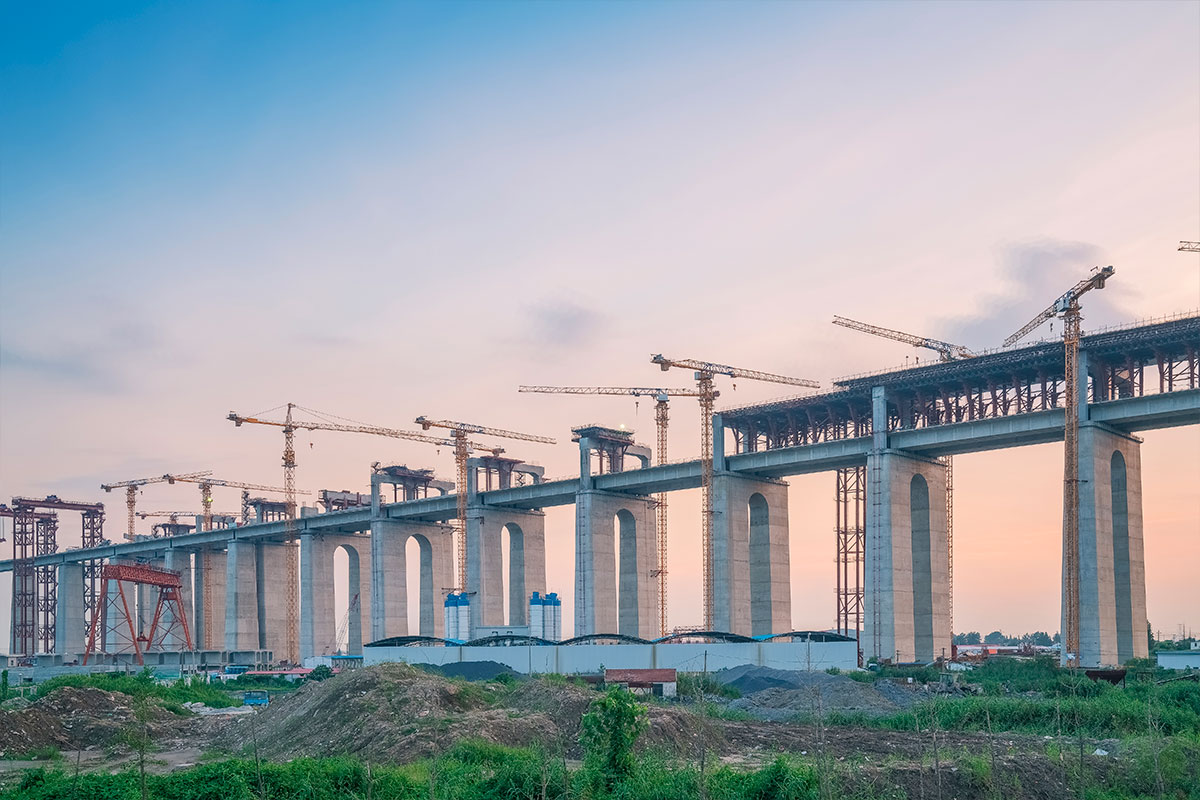There is light, we are told, at the end of a long and winding tunnel for infrastructure in the UK if the Government supports it.
At a time when the upper echelons of the UK Government are side tracked by the Gordian Knot presented by Brexit and impressive sideshows like collapsing High Street retailers, infrastructure is naturally a less acute issue.
These are what we all know to fit under the umbrella business-speak calls “Challenging market conditions”.
Now, as the industry is presented with new problems and opportunities such as that created by the estimated £14bn Heathrow extension, a report from the Civil Engineering Contractors Association (CECA) says despite the background we could be seeing a return to activity in the infrastructure sector.
Workloads
CECA’s Workloads Trends Survey for Q1 2018 found that workloads in infrastructure projects have declined by 1 per cent for the second successive quarter.
This comes on top of wide-scale reports of a country-wide construction skill shortage and an industry which has found recruitment consistently more challenging for many reasons. Not least of these is the continuing impact of the draconian IR35 – a regulation which requires most workers to yield up their freelance status and become full time employees – unhelpful in the notoriously mobile construction industry.
Haydn Mursell, CEO of construction giant Kier warned of the continuing damaging effect of the construction skill shortage: “Attracting people into the industry, however, is a fundamental challenge, and we currently face a potential workforce shortfall. Around 400,000 construction jobs were lost during the financial crisis, and the industry continues to lose around 140,000 people a year.”
Overall, 28 per cent of the respondents to the CECA survey reported workloads had fallen compared to a year ago, and 44 per cent reporting that workloads were unchanged. For England, only 9 per cent of firms, on balance, reported an increase in workloads in Q1, down from 21 per cent in Q4.
However, there is good news, according to CECA as order books increased for 24 per cent of British firms on balance, and one-third of UK contractors have inspired some optimism as they expect their workloads to increase in the coming year.
Breakdown
Broken down, the stats reveal that in England, 55 per cent of firms reported orders had increased and 28 per cent said no change, but the net balance of 38 per cent of companies reported a decrease in orders – the highest since 2015 Q1. No, it comes straight from their stats.
Welsh contractors reported a negative balance of minus 6 per cent for orders in Q4 2017 but the start of 2018 saw a turnaround, with a balance of 46 per cent of firms seeing orders increase.
The picture is much bleaker north of the border with the survey showing workloads in Scotland declined again over the last quarter.
Alasdair Reisner, CECA CEO, said: “This year has seen challenging market conditions in the UK’s infrastructure sector, where the aftershocks of the Carillion liquidation continue to be felt. We believe there is more the government can do to support the sector, by committing to projects outlined in the National Infrastructure Delivery Plan and continuing to develop this pipeline to secure economic growth.
Light
“At the same time, our members are reporting that they are expecting orders to turn into activity, as schemes come forward to market in the coming year. While the first quarter of 2018 has proved a challenging period for many of our members, we believe that there is light at the end of the tunnel, and that industry will act as a platform for secure growth in the coming years.”
In the annual update of its infrastructure and construction pipeline, published in December, the UK Government outlined over £460bn of planned infrastructure investment across the public and private sectors, including over £240bn which will occur in the next four years.
The scale of this project pipeline is immense, covering the construction and maintenance of roads, railways, hospitals, power stations and schools.
If the UK Government can bring focus to bear on the sector funding of infrastructure, [comma here perhaps?] projects will once again be brought into sharp relief.
Weight
Mursell also called upon the UK Government to throw more weight behind the infrastructure industry.
Pointing to Kier’s collaborative approach he said: “By working with government to engage and develop the next generation of construction skills, and through adopting a more collaborative approach to procurement, our industry can play its fullest possible role in meeting the UK’s infrastructure challenge and make a major contribution to long-term prosperity.”
Funding challenges can be met in 2018 with innovative new pathways to infrastructure capital.
One such is a new marketplace, the Estates and Infrastructure Exchange (EIX) which will issue rated debt infrastructure projects as tradeable securities.
Its chairman, Prof Ian Reeves CBE, says: “An exchange can only help to bring funding into sharper focus. The transparency and liquidity it will bring to capital markets is one aspect.
“The pricing of the listed bonds will directly reflect the value of the project and there is a high degree of stability in infrastructure, particularly in the last ten to 12 years notwithstanding what has happened in the wider economy it goes on still producing returns.
“Additionally, an exchange directly allows institutions to invest in projects they would not otherwise be able to access with a 25 to 30-year instrument that provides unmatched stability.”

